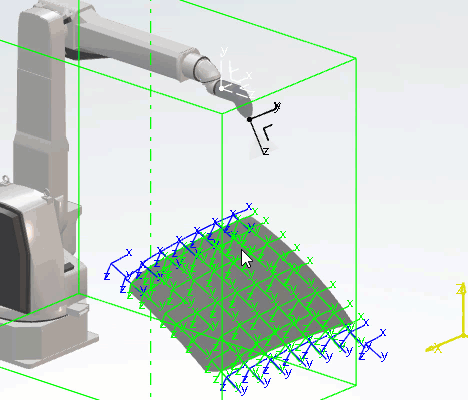Blasting | |||
| |||
-
From the Surface section of the action bar,
click Blasting profile
 and select
a robot in the work area.
and select
a robot in the work area.
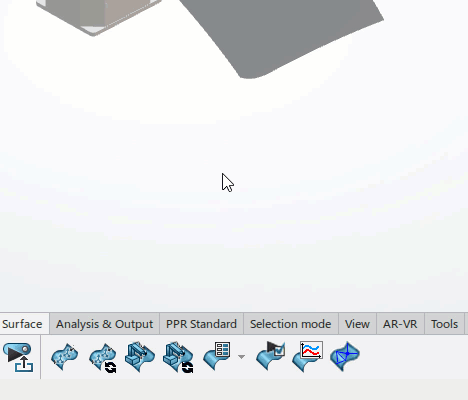
The Blasting profile dialog box appears.
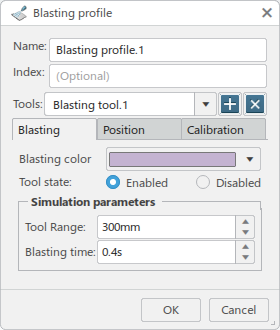
-
You can enter a Name and specify an Index
for the new profile.

-
Select a blasting tool from the Tools list of available tools.

Click
 to add a blasting tool to the list, and
to add a blasting tool to the list, and  to remove a tool from the list.
to remove a tool from the list. -
In the Blasting tab, click the Blasting
color list to select a color for the object.
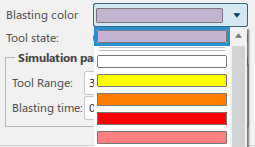
-
Select Enabled in the Tool state section
for abrasion to occur on the blasted surface. Select Disabled for
no abrasion.

Note: Several tools can be associated to a robot. They can be activated or deactivated per profile. -
In the Simulation parameters section:

- Tool Range specifies the distance from the nozzle to the blasted surface.
- Blasting time specifies the time at each surface point to produce the ideal 100% abrasion exposure during simulation.
-
Click the Position tab.
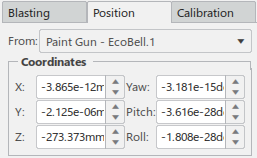
- The current selection in the From list specifies the tool profile from which the position is defined relative to.
- The Coordinates section specifies the offsets for X, Y, Z, Yaw, Pitch, and Roll from the current TCP location.
-
Click the Calibration tab.
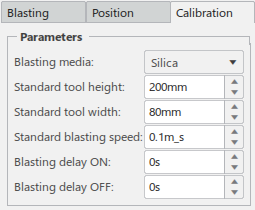
- Blasting media specifies the material type used for blasting. Available types are Silica, Mineral, and Soda.
- Standard tool height specifies the height of the blasting tool cone.
- Standard tool width specifies the width of the blasting tool cone.
- Standard blasting speed specifies the reference robot TCP speed that will result in 100% abrasion exposure.
- Blasting delay ON specifies the time delay in blasting deposition turning on after blasting flow is turned on.
- Blasting delay OFF specifies the time delay in blasting depostion turning off after blasting flow is turned off.
-
Click OK to create the new Blasting profile.
The new profile appears in the Profiles side tab:

The profile can be edited by double-clicking the thumbnail in the Profiles side tab.
-
From the Surface section of the action bar, click Surface
Trajctory
 and create one
or more surface trajectories as described in Generating Paths.
and create one
or more surface trajectories as described in Generating Paths.
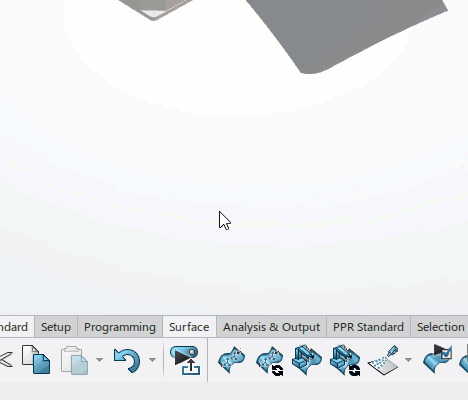
-
From the Surface section of the action bar, click Generate Robot
Task
 and create a task as described in Generating Surface Tasks.
Note: In the Trigger Parameters section of the Create Operations dialog box, select the blasting profile created above from the App. Profile list.
and create a task as described in Generating Surface Tasks.
Note: In the Trigger Parameters section of the Create Operations dialog box, select the blasting profile created above from the App. Profile list.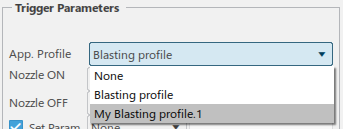
-
Set the Paint Results tab of Simulation
Options for Polishing.
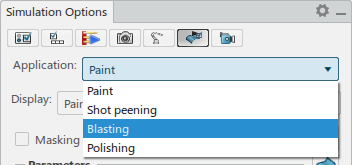
-
Select the task in the Behavior side tab, and click Play in the Compass to simulate the task.
